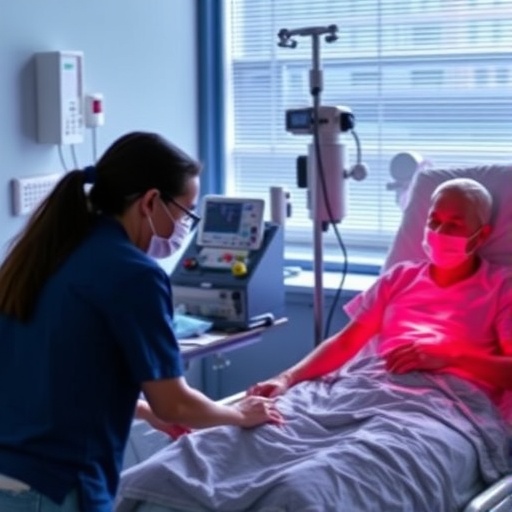DENVER – Early-stage non-small cell lung cancer (NSCLC) patients with squamous cell carcinoma (SqCC) have a significantly higher rate of local failure after stereotactic body radiation therapy (SBRT) than other NSCLC histological subtypes.
Lung cancer is the leading cause of cancer deaths worldwide, causing more deaths than breast, colon, and prostate cancers combined. NSCLC is the most common type of lung cancer, accounting for roughly 85% of lung cancers. Surgical resection is the standard treatment of early-stage (stage I, II) lung cancers. However, a subset of early-stage patients will be unable to tolerate surgery due to their age, location of tumor, or medical comorbidities. SBRT is a noninvasive, high-precision radiation delivery technique of a few (or even a single) high-dose fractions to small areas or tumors that has become established as the standard of care in medically inoperable patients. NSCLC is composed of several histological subtypes that effect the genetic and microenvironments of tumors, and the impact of histology or tumor heterogeneity on SBRT treatments is not very well understood.
A group of researchers from Cleveland Clinic in Cleveland, Ohio, USA analyzed 740 patients from an institutional review board-approved database of early-stage NSCLC patients treated with SBRT from 2003 through 2015 to investigate the impact of histological subtype and tumor heterogeneity on SBRT treatment. Patients were grouped into four categories by tumor type: adenocarcinoma, SqCC, unknown, and NSCLC not otherwise specified (NOS). The unknown group included patients who did not undergo a tissue biopsy and those with a nondiagnostic biopsy result. The NSCLC NOS group included patients with large cell carcinoma and NSCLC NOS. Patients were well balanced for patient age, sex, BMI, performance status, length of follow-up, and radiotherapy (RT) dose. Cumulative incidence curves (CICs) for local failure, defined as radiographic progression with or without positive biopsy results within 1 cm of the planning target volume (PTV), were estimated using the competing risk method. Predictors of local failure were estimated using Fine and Gray regression. Actuarial analysis was used to estimate rates of overall survival (OS), and the Kaplan-Meier method was used to generate OS curves.
The results of the study published in the Journal of Thoracic Oncology, the official journal of the International Association for the Study of Lung Cancer (IASLC), show that of the 740 eligible patients 32% were characterized as adenocarcinoma, 29% as SqCC, 30% as unknown, and 8% as NSCLC NOS. Overall, 72 patients had a local failure, with a cumulative incidence of local failure at 3 years of 11.8%. Univariate analysis demonstrated that SqCC histological subtype, younger age, fewer medical comorbidities, higher body mass index, higher positron emission tomography standardized uptake value, central tumors, and lower radiation dose were associated with an increased risk for local failure. Multivariate analysis identified SqCC histological subtype (hazard ratio = 2.4, p = 0.008) as the strongest predictor of local failure. Three year cumulative rates of local failure demonstrated that patients with SqCC (18.9% (95% CI: 12.7-25.1)) failed SBRT at a significantly higher rate than those with adenocarcinomas (8.7% (95% CI: 4.6-12.8)), or NSCLC NOS (4.1% (95% CI: 0-9.6)).
The authors comment that, "This study is the first demonstration of a histological basis for local failure after SBRT. The results demonstrate that SqCC have a significantly higher rate of local failure after SBRT than other NSCLCs do. The local failure rate for SqCC was twofold higher than for adenocarcinomas. These results suggest that SqCCs are more resistant to SBRT than other NSCLCs are. The clinically significant implication of our study is that SBRT treatments should be optimized on the basis of histological subtype."
###
Co-authors Gregory Videtic and Mohamed Abazeed are members of IASLC.
About the IASLC
The International Association for the Study of Lung Cancer (IASLC) is the only global organization dedicated to the study of lung cancer. Founded in 1974, the association's membership includes more than 5,000 lung cancer specialists in over 100 countries. Visit http://www.iaslc.org for more information.
Written by: Jacinta Wiens, PhD, 720-598-1941; [email protected]
Media Contact: Becky Bunn, 720-254-9509; [email protected]
Media Contact
Becky Bunn
[email protected]
720-254-9509
http://iaslc.org/
############
Story Source: Materials provided by Scienmag




